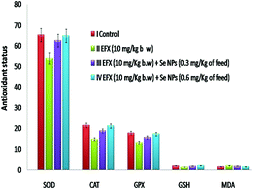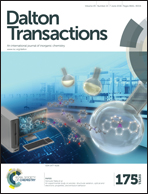Protective role of biogenic selenium nanoparticles in immunological and oxidative stress generated by enrofloxacin in broiler chicken
Abstract
Presently most bacteria are becoming antibiotic resistant. Due to this there is a deficiency of potent antibiotics, therefore we have to preserve and improve the efficiency of existing antibiotics by mitigating the side effects. Enrofloxacin (EFX) is an important antimicrobial used in veterinary practice but it is known to exert immune suppression antioxidant stress. In the present study, we report on: (a) the biosynthesis of selenium nanoparticles (Se NPs), and (b) their protective effect in reducing adverse effects of EFX on broiler chicken. A potent bacterial strain, isolated from farm soil, has been identified as Pantoea agglomerans (GenBank: KU500622). It tolerates a high concentration of selenium dioxide (9 mM) and produces Se NPs under aerobic conditions. The obtained Se NPs are amorphous in structure and spherical in shape with sizes of less than 100 nm. The activity of cellular, humoral immune response and enzymatic and non-enzymatic antioxidants, has significantly been decreased as a result of EFX treatment. We investigated that Se NP supplementation greatly restores these values towards the control, and to even higher than those of the control. Adverse effects of EFX are prevented by simultaneous exposure to Se NPs (0.6 mg per kg of feed) in the diet of poultry chicken.


 Please wait while we load your content...
Please wait while we load your content...